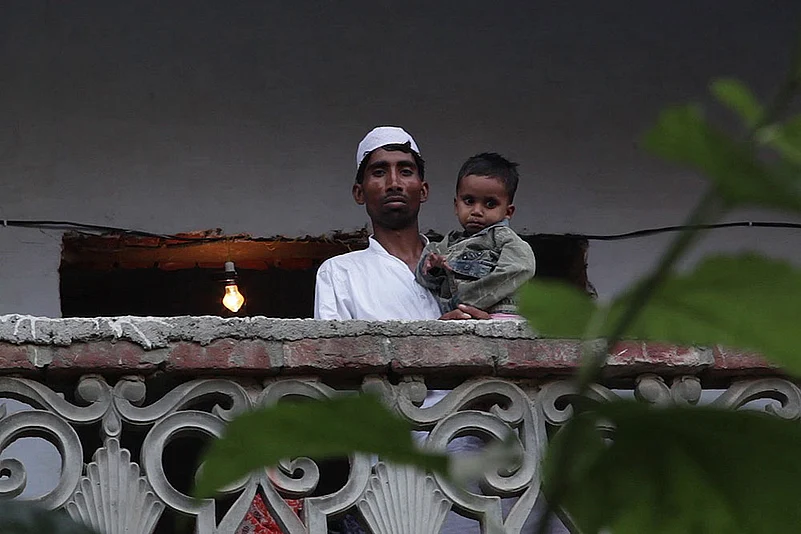Jashn-e-azadi (2007)
- Director: Sanjay Kak
The film has stirred controversy and consistently been stopped by right-wing fundamentalists in many of its screenings because of the portrayal of life under military control in Kashmir.
Un-freedom (2015)
- Director: Raj Amit Kumar
The censor board banned the film saying that it will incite “unnatural passions” because of the homosexual content in the film
Muzaffarnagar Baki Hai (2015)
- Director: Nakul Singh Sawhney
Sawhney presents how Uttar Pradesh turned into a battleground of communal and political clashes during 2013, just before BJP came to power at the Centre in the 2014 Lok Sabha elections
***
Hansal Mehta’s Aligarh, a film on the life of a homosexual professor, was banned in the town it is based in. Another film, Un-freedom, was banned by the censor board last year because of ‘questionable content’: a lesbian relationship and an Islamic terrorist angle. Now, filmmakers across the country who have been dealt a similar blow have joined hands to find ways to screen their films by eschewing the usual commercial release route. So, instead of waiting for a censor board certificate, filmmakers are simply screening their films behind closed doors to select audiences, gathered mostly through the word of mouth or personal invites.
Cartoonist-activist Aseem Trivedi’s Free Speech Film Festival, organised last month in New Delhi, where three banned documentaries were shown, had this goal in mind—to send a message of defiance to the government and the censor board. “We have for quite some time been thinking of screening films which are socially relevant but banned by the government. We wanted to name this ‘Banned Film Festival’, but then realised that ‘Free Speech’ sent out a larger message,” says Trivedi. The festival screened Nakul Singh Sawhney’s Muzaffarnagar Baki Hai, Un-freedom by Raj Amit Kumar and Jashn-e-Azadi by Sanjay Kak in Delhi’s Gandhi Trust Auditorium. These films, among several others, have now been screened in closed-door as well as in open amphitheatres over 100 times across the country.
Making a film in India which does not fit into a conventional mould of the ‘acceptable’ seems to have become even more difficult in recent times. “The desire to make a ‘political’ film cannot be mistaken for an invitation to a dinner party,” says Kak, maker of Jashn-e-Azadi, a film about the Kashmir conflict. He says the filmmaker faces trouble at every step—during shooting, scripting and exhibiting. Even when it’s made, it is an uphill struggle to sell it to the Indian audience. “Even before a film is released, audiences tend to form an opinion on it. This taints the opinions of most release platforms and the censor board,” says Ketan Pedgaonkar, a scriptwriter from Mumbai. The audience for serious films, features or documentaries, dealing with social unrest or contemporary politics, is still minuscule in India, says Kak.
However, pleasingly, the audience for such films, however small, is growing, and not just in urban India. The Gorakhpur Film Festival, part of the Cinema of Resistance project, has spawned a whole series of low-budget, self-funded, autonomous film festivals all over the Hindi belt. “Screening films has become a lot easier because of the support of such film groups and festivals. Technology and social media too have gone a long way in this regard,” says Sawhney. Then there is People’s Film Festival, which has been drawing considerable crowds in Calcutta for the last three years. Other festivals, such as the Dharamshala Film Festival and the Bangalore Film Festival, are also gaining prominence. The festival in Dharamshala, in fact, screened the highly controversial documentary Placebo—on the diffculties medical students face at Delhi’s AIIMS—which faced delays in its India release but has been an official selection for international film festivals.
Film clubs too are now looking to screen films which people might not get a chance to see otherwise, expanding their reach even further. The Shamiyana film club, run by Mumbai-based Cyrus Dastur, tries screening as many offbeat films as it does mainstream crowd-catchers. Dastur’s idea behind screening films like Un-freedom is simple—if someone is trying to send a larger message through a film, then it should be heard. “We are living at a time when religion and nationalism have become paramount. While to a certain extent that is fine, we can’t clamp down on films which deserve to be screened,” he says. If multiplexes and big halls won’t touch these films, a subterranean existence is their only refuge for now.
















